Any links to online stores should be assumed to be affiliates. The company or PR agency provides all or most review samples. They have no control over my content, and I provide my honest opinion.
I have been using the Pixel 8 Pro since the middle of October, replacing my Honor Magic5 Pro, which replaced my Pixel 6.
I skipped past the Pixel 7 Pro as the hardware was barely an upgrade from the Pixel 6 Pro and just didn’t seem worth it.
The Pixel 8 Pro has some significant upgrades, including a much-improved chipset and ultrawide camera, as well as some nice display improvements.
As always with Google, it is as much about the software features as it is about the hardware, and Google continues to push AI heavily with the Pixel 8 Pro.
The phone comes with a hefty price increase, making it more expensive than some competing flagship phones, including the Honor Magic5 Pro, while technically having inferior hardware. However, the Pixel 8 Pro still ends up being one of the best options you can buy thanks to the overall quality of the software and features that Google has developed.
| Preview | Product | Rating | Price | |
|---|---|---|---|---|

| Google Pixel 8 Pro – Unlocked Android Smartphone with... |
£754.99 | Buy on Amazon |
Pixel 8 Pro vs Pixel 7 Pro Specification
| Pixel 8 Pro | Pixel 7 Pro | |
|---|---|---|
| Released | Oct-23 | Oct-22 |
| Android | Android 14 7 years of Pixel updates | Android 13 5 years of Pixel updates |
| Display | Full-screen 6.7-inch (170 mm)1 display 20:9 aspect ratio Super Actua display (1344 x 2992) LTPO OLED at 489 PPI Smooth Display (1–120 Hz2) Corning Gorilla Glass Victus 2 cover glass Always-on display with At a Glance and Now Playing Up to 1600 nits (HDR) and up to 2400 nits (peak brightness) >1,000,000:1 contrast ratio HDR supported Full 24-bit depth for 16 million colors | Full-screen 6.7-inch (170 mm) display 19.5:9 aspect ratio QHD+ (1440 x 3120) LTPO OLED at 512 PPI Smooth Display (up to 120 HZ) Always-on display At a Glance Now Playing |
| Chipset | Google Tensor G3 (4 nm) Nona-core (1x3.0 GHz Cortex-X3 & 4x2.45 GHz Cortex-A715 & 4x2.15 GHz Cortex-A510) Immortalis-G715s MC10 GPU | Google Tensor G2 (5 nm) Octa-core (2x2.85 GHz Cortex-X1 & 2x2.35 GHz Cortex-A78 & 4x1.80 GHz Cortex-A55) Mali-G710 MP7 GPU |
| RAM | 12 GB LPDDR5X RAM | 12 GB LPDDR5 RAM |
| Storage | 128 GB / 256 GB / 512 GB UFS 3.1 storage | 128 GB / 256 GB / 512 GB UFS 3.1 storage |
| Rear Camera | 50 MP Octa PD wide camera 1.2 μm pixel width ƒ/1.68 aperture 82° field of view 1/1.31" image sensor size 48 MP Quad PD ultrawide camera with autofocus 0.8 μm pixel width ƒ/1.95 aperture 125.5° field of view Lens correction 48 MP Quad PD telephoto camera 0.7 μm pixel width ƒ/2.8 aperture 21.8° field of view 5x optical zoom Super Res Zoom up to 30x13 Features Multi-zone LDAF (laser detect auto focus) sensor Spectral and flicker sensor Optical + electronic image stabilization on wide and telephoto | 50 MP Octa PD Quad Bayer wide camera 1.2 μm pixel width ƒ/1.85 aperture 82° field of view 1/1.31" image sensor size 12 MP ultrawide camera10 with autofocus 1.25 μm pixel width ƒ/2.2 aperture 125.8° field of view10 Lens correction 48 MP Quad Bayer PD telephoto camera 0.7 μm pixel width ƒ/3.5 aperture 20.6° field of view 5x optical zoom Super Res Zoom up to 30x11 Features LDAF (laser detect auto focus) sensor Spectral and flicker sensor Optical + electronic image stabilization on wide and telephoto |
| Front Camera | 10.5 MP Dual PD selfie camera 1.22 μm pixel width ƒ/2.2 aperture Autofocus 95° ultrawide field of view | 10.8 MP 1.22 μm pixel width ƒ/2.2 aperture Fixed focus 92.8° ultrawide field of view |
| Audio | Stereo speakers 3 microphones Noise suppression Spatial audio | Stereo speakers 3 microphones Noise suppression Spatial audio |
| WiFi | Wi-Fi 7 (802.11be) with 2.4GHz+5GHz+6GHz, 2x2+2x2 MIMO | Wi-Fi 6E (802.11ax) with 2.4GHz+5GHz+6GHz, HE160, MIMO |
| Bluetooth | 5.3, A2DP, LE, aptX HD | 5.2, A2DP, LE, aptX HD |
| USB | USB Type-C 3.2 Gen 2 | USB Type-C 3.2 Gen 2 |
| Battery | 5050 mAh | 5000 mAh |
| Charging | up to 50% charge in about 30 minutes with Google 30W USB-C Charger with USB-PD 3.0 (PPS) | up to 50% charge in about 30 minutes with Google 30W USB-C Charger with USB-PD 3.0 (PPS) Qi-certified |
| IP Rating | IP68 | IP68 |
| Dimensions | 162.6 height x 76.5 width x 8.8 depth (mm) | 162.9 height x 76.6 width x 8.9 depth (mm) |
| Weight | 213 g | 212 g |
| Warranty | US: 1 Year UK/EU: 2 years | UK/US: 1 Year EU: 2 years |
| Launch Price | £999 / £1059 | £849 / £949 |
Pixel 8 Pro vs Pixel 7 Pro
Key differences between this year’s Pixel 8 Pro and the 7 Pro from last year include:
- A brighter display that can reach up to 2,400 nits peak brightness, compared to 1,500.
- Pixel 8 Pro has a variable 1-120Hz refresh rate versus 10-120Hz on the Pixel 7 Pro.
- The Pixel 8 Pro has an upgraded 48MP ultrawide camera versus 12MP on the Pixel 7 Pro. This allows for sharper and more detailed ultrawide photos.
- The main and telephoto cameras are similar, but the Pixel 8 Pro has improved apertures for better low-light performance.
- The Pixel 8 Pro is powered by the new Tensor G3 chip which is a significant upgrade from the G2. The G2 was only a slight improvement from the original Tensor chipset.
- Pixel 8 Pro has a temperature sensor that can scan surfaces to determine temperature.
- 7 years of security updates vs 5
Design and Build Quality
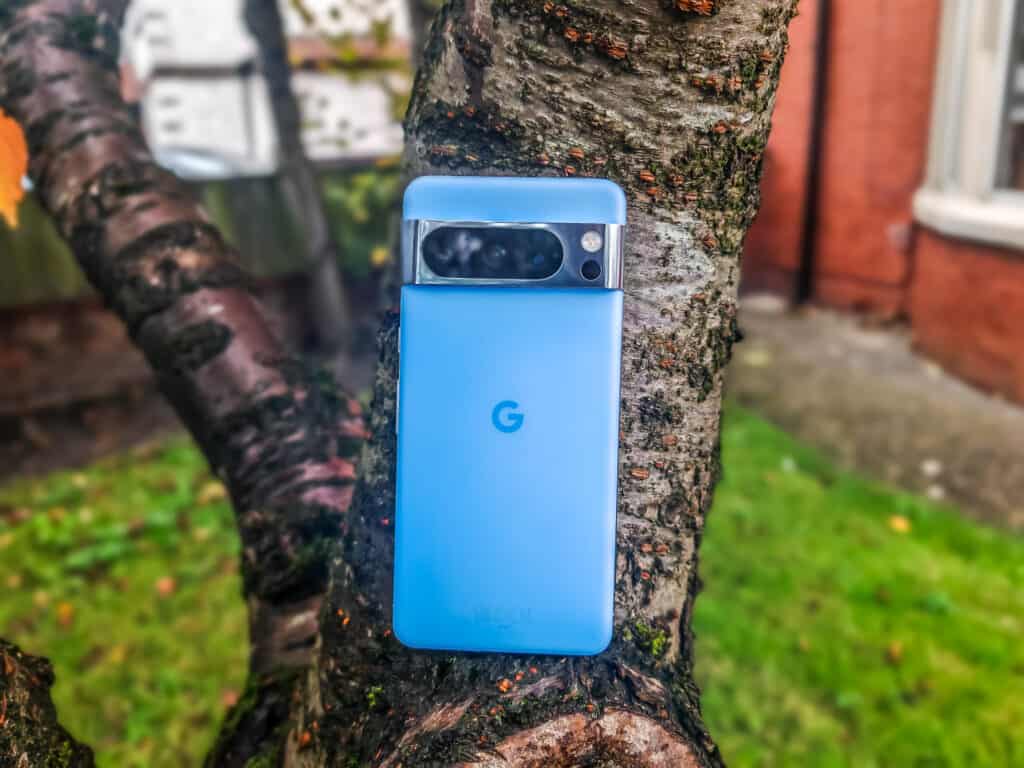

The Pixel 8 Pro sports a refined design that is similar to last year’s Pixel 7 Pro, with a few subtle but welcome changes. It has the same basic shape and layout, with the prominent camera bar stretching across the back, but the rear glass now has a matte frosted finish rather than a glossy one.
This gives the Pixel 8 Pro a softer, smoother feel in the hand and makes it less prone to fingerprints. The polished metal frame also has a matte texture, providing a nice contrast with the glossy metal frame of the Pixel 7 Pro.
Even though I always use a case with my phone, the Pixel 8 Pro feels lovely to hold (for a phone) and doesn’t feel like it gets slippy if you have been holding it for a while.
Display
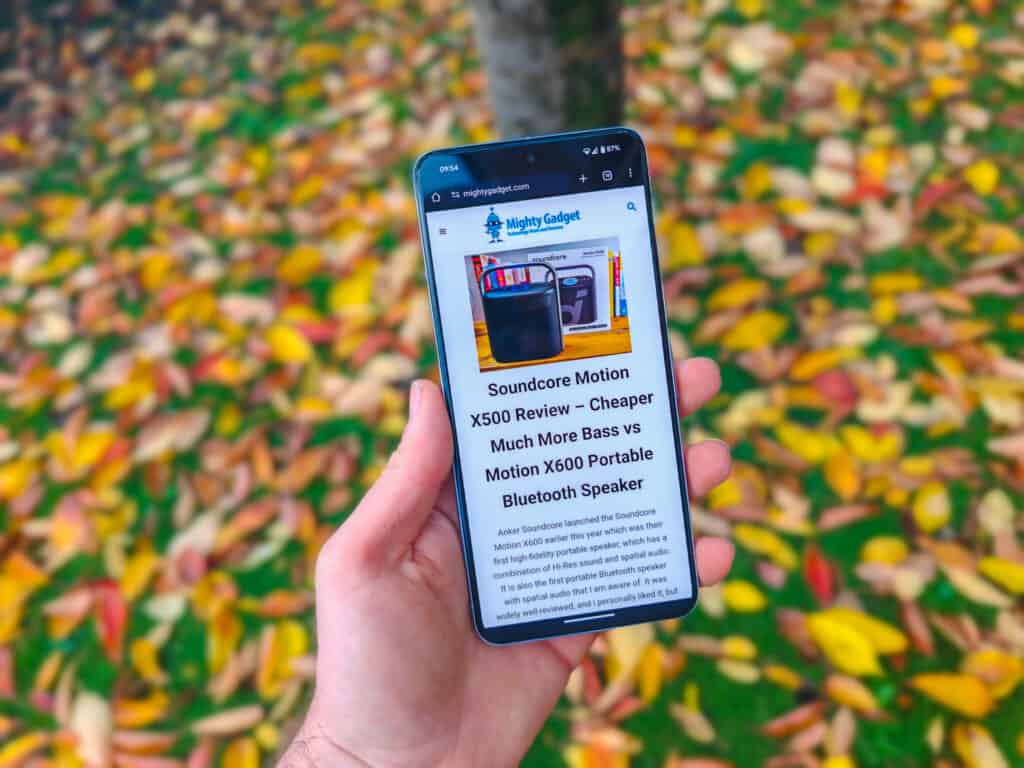

The Pixel 8 Pro has a stunning 6.7-inch OLED display with a resolution of 2992 x 1344 pixels. Unlike many modern flagship Android phones, it has a flat display, but with very thin bezels, it may look less visually impressive than a curved display, but it has better usability as you avoid touchscreen issues along the edge of the display.
It supports HDR content and has a variable refresh rate of up to 120Hz for smooth scrolling and animations. This year, the refresh rate can drop down to as low as 1Hz, instead of 10Hz, which should help conserve energy for things like the always-on-display. Then it is significantly brighter with 1,600 nits for HDR content and 2,400 nits for peak. It is worth noting there does seem to be a trend with much brighter displays, the relatively affordable Xiaomi 13T has a peak brightness of 2600 nits.
The display is incredibly bright, vibrant and sharp. The colours look fantastic, and the panel does an excellent job of reproducing vivid and accurate colours. It’s Google’s brightest display yet, making it easy to see even in direct sunlight.
Compared to the Pixel 7 Pro, the Pixel 8 Pro display has even smaller bezels, and the screen is perfectly symmetrical. The higher peak brightness and improved 120Hz refresh rate also give it an edge over last year’s model.
Overall, I have been very impressed with the stunning display on the Pixel 8 Pro, considering it one of the best in its class for quality and brightness. It’s a noticeable upgrade over the already excellent Pixel 7 Pro display.
Biometrics
I was using the Pixel 6 as my main phone for a couple of years. It was a decent phone, but the fingerprint scanner infuriated me. It was bordering on useless even after multiple times redoing my fingerprint mapping within the settings. Then there was no face unlock, something which I have been fond of on most competing phones. The end result was me having to type in my PIN, and it didn’t auto unlock, I had to press enter.
Of course, the narrative was this was all for improved security.
Thankfully, the Pixel 8 Pro is completely different. First of all, it works effectively. It is not quite as fast as some competing options, but most importantly, I have found it to be very accurate.
Then, you now have face unlock, which again seems to work well.
Considering how often I unlock my phone a day, this simple fix makes a significant difference, and the phone is much more pleasurable to use than my old Pixel 6.
Camera
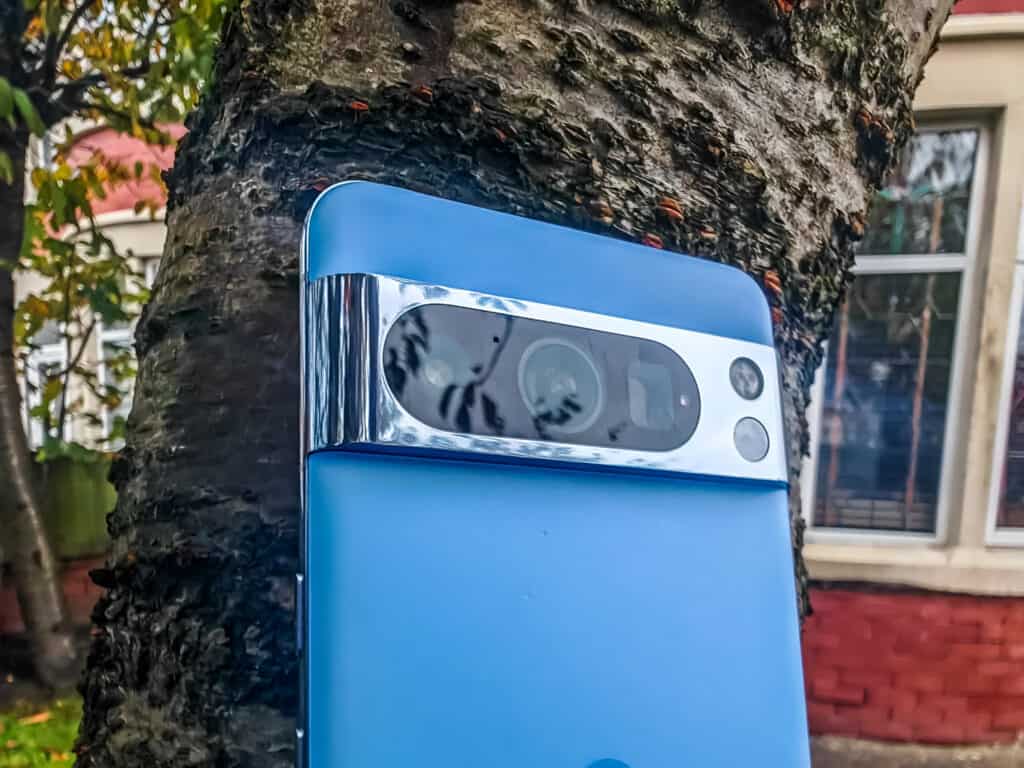

The Pixel series has always been highly regarded as one of the best-performing phones for photography. Prior to the Pixel 6, Google was using a basic 12.2 MP 1/2.55″, yet outperformed many of their rivals, showing how important the software aspects of phones are.
With the launch of the Pixel 6 series, Google has been upgrading the camera hardware as well as continuing to improve the software aspects. The main change this year is a massive upgrade for the ultra-wide sensor, but even the main camera has seen an improvement.
I will be uploading more camera samples over the next week.
Main 50MP Wide Camera
The Pixel 8 Pro’s 50MP primary camera with a large 1/1.31 sensor is a decent upgrade from the previous generation, especially in terms of low-light performance. With an aperture that’s been widened from F1.85 to F1.68, it captures 21% more light than the Pixel 7 Pro.
The Pixel 8 Pro’s main camera is equipped with optical and electronic image stabilisation, ensuring that images remain sharp and steady, even when shooting handheld or in motion.










48MP Telephoto Camera
The Pixel 8 Pro has an excellent 48MP telephoto camera with a zoom of 5x, and an equivalent focal length of 112mm and a bright f/2.8 aperture. This telephoto lens provides users with the ability to zoom in on distant subjects with impressive clarity and detail. Whether capturing wildlife, sports events, or faraway landscapes, the telephoto camera on the Pixel 8 Pro delivers exceptional results.
The image stabilisation in the telephoto camera is one of the standout aspects of the telephoto camera for me. I will always avoid digital zoom, when possible, but when I do use it, most competing phones struggle with a lot of sway, which inevitably causes blurriness and loss of detail. The Pixel 8 Pro seems to lock on to the focal point, allowing you to take consistently good, zoomed shots. For comparison, the Honor Magic5 Pro has 5x 50 MP zoom lens, which also has OIS, but I find it much harder to take good-quality shots with this camera.








48MP Ultrawide Camera
The Pixel 8 Pro’s 48MP ultrawide camera is a welcome addition, offering an 11mm equivalent focal length and a bright f/1.95 aperture. This wide-angle lens allows users to capture expansive landscapes, group photos, and architectural shots with ease. The wider aperture enables more light to enter the sensor, resulting in brighter and more detailed images.
With its improved sensor size and resolution, the ultrawide camera on the Pixel 8 Pro delivers exceptional image quality and dynamic range. It captures intricate details and vibrant colours, even in challenging lighting conditions. Whether shooting indoors or outdoors, the ultrawide camera provides users with the flexibility to capture breathtaking wide-angle shots.
10.5MP Front-Facing Camera
The Pixel 8 Pro brings autofocus to the front camera, aiming for sharper, more detailed selfies, which is a first for Pixel phones. The front camera also boasts a wide 95° field of view, allowing for group selfies and capturing more of the surroundings.
The front-facing camera on the Pixel 8 Pro excels in portrait mode, producing impressive bokeh effects and accurately detecting and blurring the background. It enhances facial features and delivers natural-looking skin tones, ensuring that users can capture stunning self-portraits effortlessly.
Shooting Modes
The Portrait Mode on the Pixel 8 Pro delivers impressive results, providing a natural and pleasing separation between the subject and the background. The AI-powered subject detection ensures that the focus is sharp and precise, resulting in well-defined facial features and accurate edge detection. While the Portrait Mode works exceptionally well with human subjects, it may struggle with pets or objects, occasionally producing artefacts or imperfect masks.
The Pixel 8 Pro’s Long Exposure feature allows users to capture stunning photos with extended exposure times, resulting in creative and visually appealing effects. Whether capturing light trails, flowing water, or starry nightscapes, the Long Exposure feature enables users to experiment with long-exposure photography without the need for additional equipment.
The results are impressive, with the camera effectively capturing the movement and creating a sense of motion in the image.
The Action Pan feature on the Pixel 8 Pro enables users to capture dynamic action shots with ease. This feature utilises advanced AI algorithms and image stabilisation to freeze the subject in motion while creating a sense of movement in the background.
To use Action Pan, users simply need to select the feature in the camera app and follow the on-screen instructions. The camera will guide users to pan their device smoothly along with the subject, ensuring that the background is blurred while the subject remains sharp. The result is an exciting and dynamic image that captures the energy and motion of the scene.
Night Sight – Low Light Performance








One of the most impressive features of the Pixel 8 Pro’s camera is its Night Sight mode. This innovative technology allows users to capture stunning low-light photos with exceptional detail and minimal noise. Night Sight leverages advanced computational photography techniques to enhance the brightness, colours, and clarity of images taken in dark environments.
Night Sight on the Pixel 8 Pro performs exceptionally well, preserving accurate colours and capturing impressive detail, even in challenging lighting conditions. Whether capturing cityscapes at night or photographing starry skies, Night Sight allows users to push the boundaries of low-light photography and create stunning images.
Video
The Pixel 8 Pro can shoot videos at 2160p with its 50MP primary sensor. It can go up to 4K 60FPS, but this then disables HDR and the speech enhancement options.
Quality holds up well even in low-light scenarios. Steady video while walking comes from the combined optical and electronic stabilisation. Slow-motion footage looks great when dropping the resolution to 240fps.
Google Photos Features
Google has launched several new features which integrate into Google Photos. While Google is keen to highlight the AI prowess of the Tensor G3 chipset, most of these functions rely on you uploading the photos and using Google Cloud for the AI capabilities.
Best Take
Best Take automatically selects the best facial expression for portrait subjects and group shots. It analyses multiple images and recommends the most flattering and well-timed shot, ensuring that users capture the perfect moment. This feature is particularly useful for group photos or portraits where getting the ideal expression is crucial.
Magic Editor




Magic Editor is an AI-powered editing feature that allows users to edit images in a more advanced and creative manner. With Magic Editor, users can manipulate objects, resize or delete them, replace skies, and even swap facial expressions. While the results may not always be perfect, Magic Editor provides users with powerful editing capabilities that can enhance and transform their photos.
Audio Magic Eraser
Another noteworthy feature of the Pixel 8 Pro is the Audio Magic Eraser. This feature utilizes AI algorithms to filter out unwanted noises in audio recordings, such as background chatter or traffic sounds. It enhances the clarity of vocals and ensures that the focus remains on the intended audio source. This feature is particularly useful for recording videos in noisy environments or capturing audio in crowded settings.
Video Boost – Future feature
Later this year, Pixel 8 Pro will get Video Boost, which pairs Tensor G3 with our powerful data centres to apply cutting-edge processing to your videos. It adjusts colour, lighting, stabilisation and graininess, and the result is stunning videos that look true to life. Video Boost also enables Night Sight Video on Pixel for better low-light smartphone video quality.
Temperature Sensor
Google has bizarrely decided to put in a temperature sensor on the Pixel 8 Pro, which is located just below the flash on the back.
You can select the material you are measuring or leave it as default. Then, place the sensor 5cm away from what you want to measure and tap the button.
The readout is quick and seems to be relatively accurate. It is not designed to measure body temperature, but we all know everyone is going to try it. I did two readings of my body, and it showed 33.6°C and 33.8°C.
Performance and Benchmarks
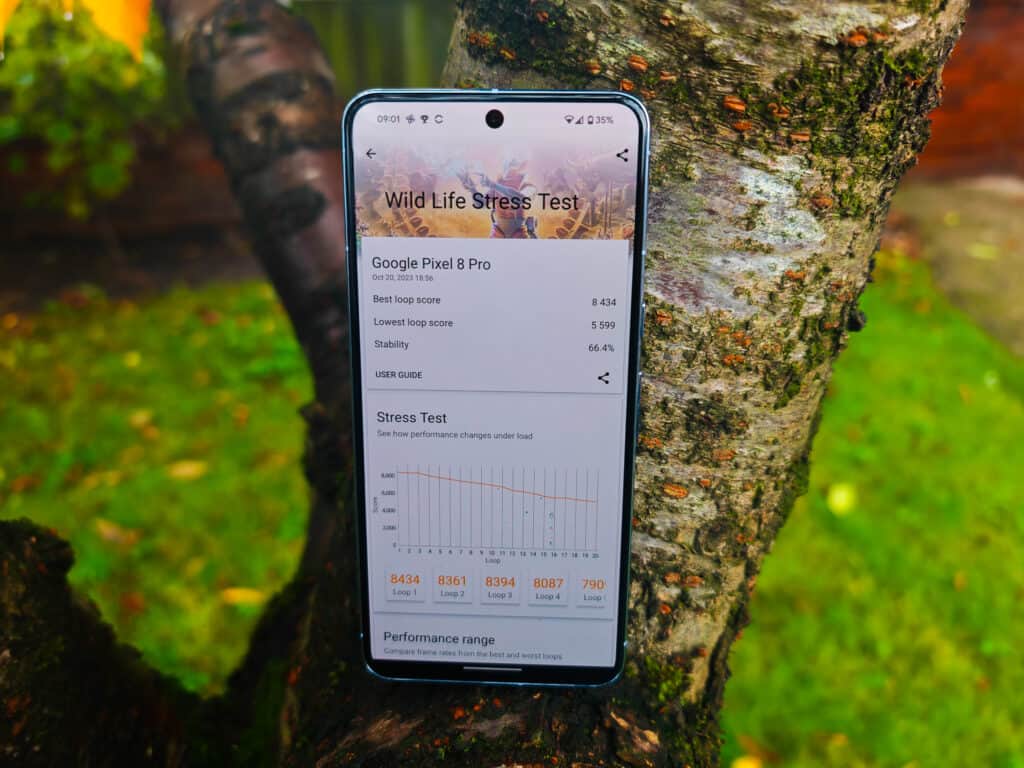

I have done a more detailed post on the benchmarks for the Google Tensor G3 chipset on the Pixel 8 Pro.
There is no getting away from the fact that the Google Tensor G3 chipset is just not as good as the Qualcomm Snapdragon 8 Gen 2. Furthermore, with the Pixel 8 series launching later in the year, the Tensor G3 performance is going to be eclipsed by the Snapdragon 8 Gen 2 and MediaTek Dimensity 9300.
However, flagship chipsets are so powerful nowadays that I can’t say I have noticed any difference in performance between the Pixel 8 Pro and my Honor Magic5 Pro with the Snapdragon 8 Gen 2.
If I were a heavy gamer, then I am sure there would be some differences, but I probably wouldn’t have bought a Pixel if this was my priority.
Battery and Charging
The Pixel 8 Pro has a 5,050-mAh battery, which is fractionally more than last year, the chipset is on a more efficient 4nm fabrication process, albeit still Samsung and the display drops down to 1Hz refresh rate. So, this phone should offer a superior battery than last year.
This has reliably lasted a full day of moderate use with taking some photos, using maps, and general social media, email and messaging.
While I am happy with it, my Honor Magic5 Pro makes it to the end of the day with significantly more charge. I could scrape two days of light usage with this phone.
Google continues to stick with a relatively slow charge speed of 30W and 23W wireless when used with the Pixel Stand or 12W with a Qi-certified EPP charger.
In general, the charge speed doesn’t make that much difference, I charge the phone once a day when I go to bed or when I start work in the morning. But, the faster charge speeds you see on most Chinese brands are incredibly useful on high-usage days, especially when I travel and have limited downtime.
Android 14 – AI & Software Features
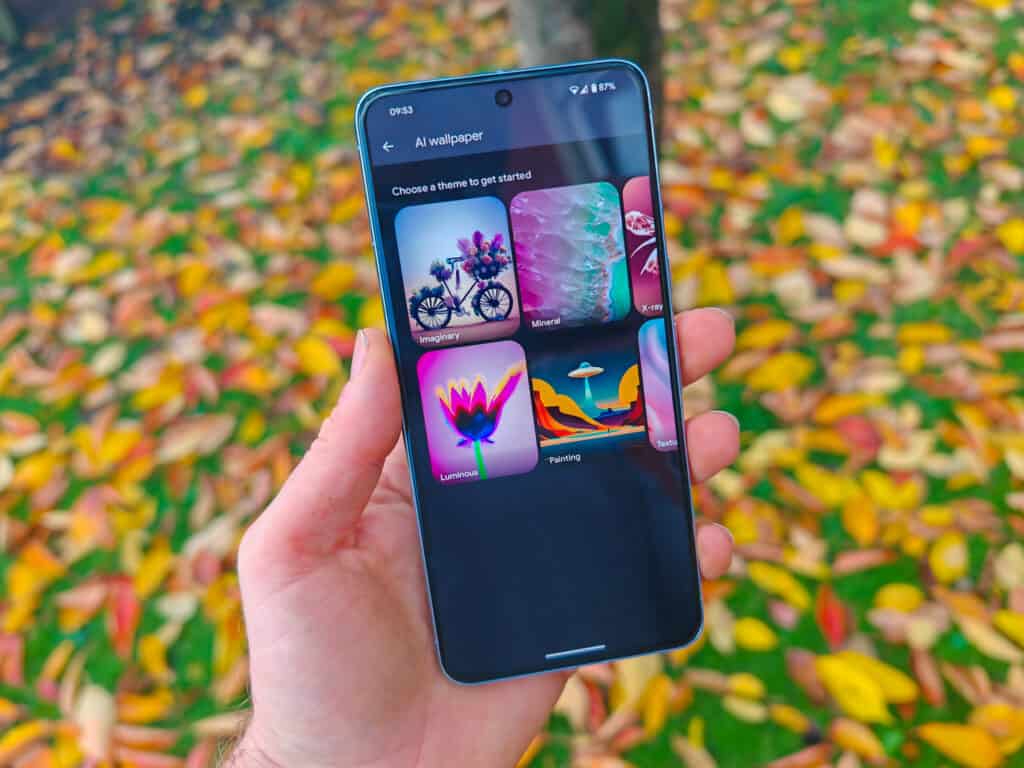

As always with Pixel phones, one of the big selling points is Android itself and all the features Google develop specifically for these phones.
Google continues to outshine the competition with their commitment to update the Pixel phones both regularly and for extended periods. Google has now committed to security updates for at least 7 years from when the device first became available.
Furthermore, Pixel phones get feature drops, which roll out multiple times per year and give you access to new features that other phone brands won’t have access to immediately.
In comparison, Samsung offers four years of software updates and five years of security updates.
While I probably would never use a phone for that long, others might. It also helps with resales as well.
Android 14 is not a massive upgrade from Android 13. The overall appearance is essentially the same, but there are some notable improvements, many of which are AI-focused. I have already covered many of the improvements Google has made within Google Photos. Then, there is a new generative AI wallpaper creator, which is fun to use and produces some fantastic, unique wallpapers.
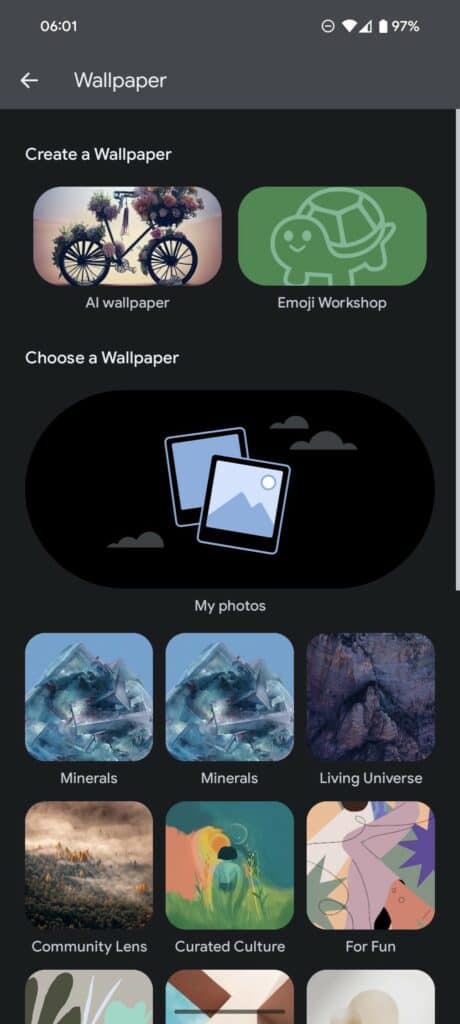

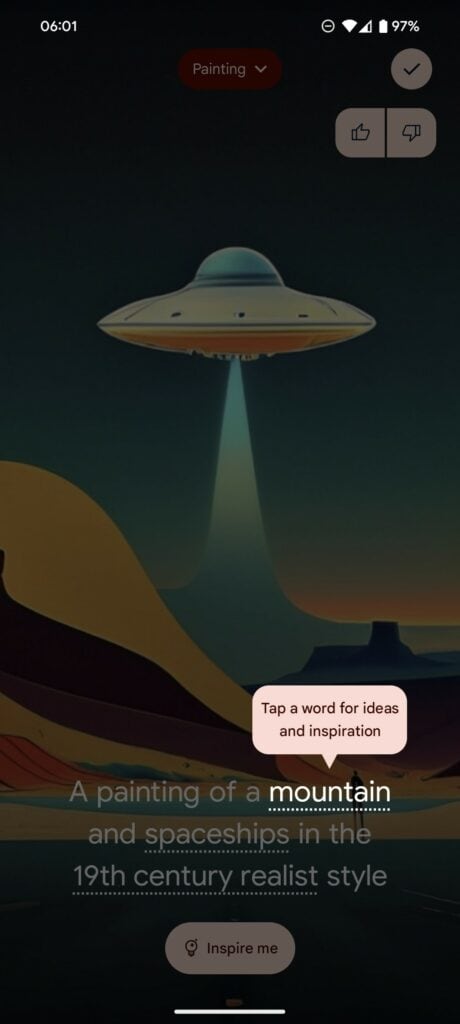

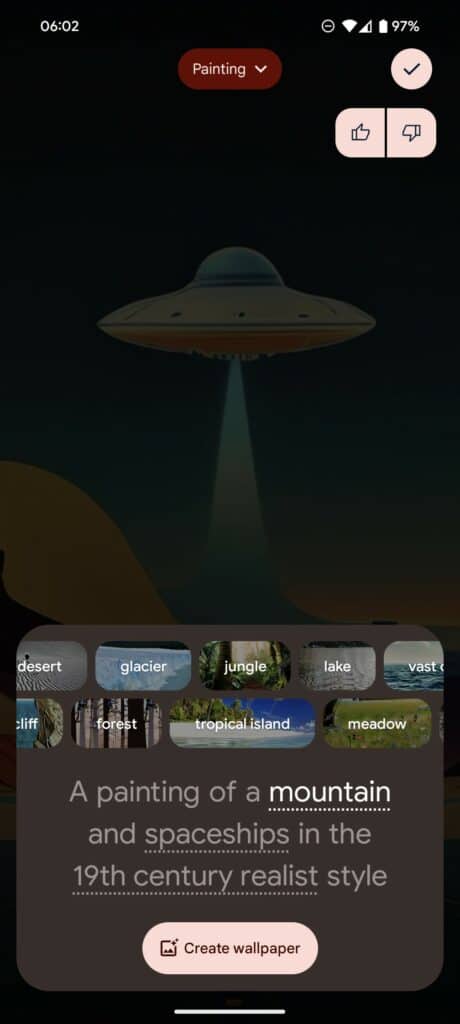



Call Screen now helps you receive 50% more spam calls on average. This smart feature helps filter out unwanted calls by answering unknown numbers with a natural conversational bot. It can determine if an incoming call is spam or legitimate. You’ll only be notified about calls you actually want to take. Call Screen even suggests quick tap responses, so you can confirm appointments or handle simple calls without picking up the phone.
It is worth noting that the phone launched without some features missing, including Zoom Enhance, Video Boost and recorder summaries. Also, while Google has claimed the Tensor G3 has excellent AI processing capabilities, many of the AI tasks the Pixel does get offloaded to Google’s cloud services.
Overall though, the Pixel series will always have one of the best Android experiences on the market.
Price and Alternative Options
| Preview | Product | Rating | Price | |
|---|---|---|---|---|
   | Google Pixel 8 Pro – Unlocked Android Smartphone with... |
£754.99 | Buy on Amazon |
The Pixel 8 Pro starts at £999 for the 128GB model and £1059 for the 256GB model.
The phone is also available on Amazon and has already been discounted slightly.
Disappointingly, this is quite a hefty price hike since last year. The Pixel 7 Pro launched at £849 / £949. The £150 price hike for the 128GB is a difficult pill to swallow.
Google has a trade-in offer as well. For phones in good condition, you’d get:
- Pixel 7 Pro 128GB – £347 estimated
- Pixel 6 Pro 128GB – £242 estimated
- Pixel 6 128GB – £200 estimated
The Samsung Galaxy S23+ with 256GB is the same £1049 price point. If you went with the Ultra, it would be £1249.
Samsung has better offers, though, with a free pair of Galaxy Buds2 Pro, 12 months Disney+ and massive trade-in discounts. For example, the Pixel 7 Pro is £500.
Overall
With the hardware refresh of the Pixel 6 series, Google has had to work hard at refining the overall experience, and I think the Pixel 8 Pro has achieved this. As much as I originally liked my Pixel 6, it grew to irritate me, but I have found the Pixel 8 Pro a pleasure to use.
It has drawn criticism from many users for the premium price and the fact that the Tensor G3 chipset does not compete very well with the Qualcomm Snapdragon 8 Gen 2 or newer 8 Gen 3. The chipset is still prone to running hot, and the battery life suffers as a consequence.
These criticisms are all accurate; it is not a perfect phone, and the overall hardware falls short of competing devices.
But, as always with the Pixel phones, it is more than just hardware. The overall software experience is better than most competing brands. There is no bloatware, better software support, and Google has a knack for making the most of the hardware that’s available to them, whereas many alternatives don’t fully utilise the underlying hardware.
Overall, the Pixel 8 Pro delivers an amazing photography experience and software package that helps justify its high price tag. While the hardware doesn’t quite measure up to some competitors, the overall user experience is excellent. The Pixel 8 Pro earns a strong recommendation for Android users wanting top-notch cameras, software, display, and performance.
Google Pixel 8 Pro Review
Summary
The Pixel 8 Pro delivers an amazing photography experience and software package that helps justify its high price tag. While the hardware doesn’t quite measure up to some competitors, the overall user experience is excellent. The Pixel 8 Pro earns a strong recommendation for Android users wanting top-notch cameras, software, display, and performance.
Overall
90%-
Overall - 90%90%
Pros
- Attractive design & flat display is more user-friendly than curved
- Superb camera
- Impressive photo-editing tools that outclass other brands
- 7 years of updates
Cons
- Underlying chipset & hardware aren’t quite as good as the competition.
- 30W charging is a bit slow for 2023 & battery performance lags behind others
I am James, a UK-based tech enthusiast and the Editor and Owner of Mighty Gadget, which I’ve proudly run since 2007. Passionate about all things technology, my expertise spans from computers and networking to mobile, wearables, and smart home devices.
As a fitness fanatic who loves running and cycling, I also have a keen interest in fitness-related technology, and I take every opportunity to cover this niche on my blog. My diverse interests allow me to bring a unique perspective to tech blogging, merging lifestyle, fitness, and the latest tech trends.
In my academic pursuits, I earned a BSc in Information Systems Design from UCLAN, before advancing my learning with a Master’s Degree in Computing. This advanced study also included Cisco CCNA accreditation, further demonstrating my commitment to understanding and staying ahead of the technology curve.
I’m proud to share that Vuelio has consistently ranked Mighty Gadget as one of the top technology blogs in the UK. With my dedication to technology and drive to share my insights, I aim to continue providing my readers with engaging and informative content.
Last update on 2024-04-30 / Affiliate links / Images from Amazon Product Advertising API

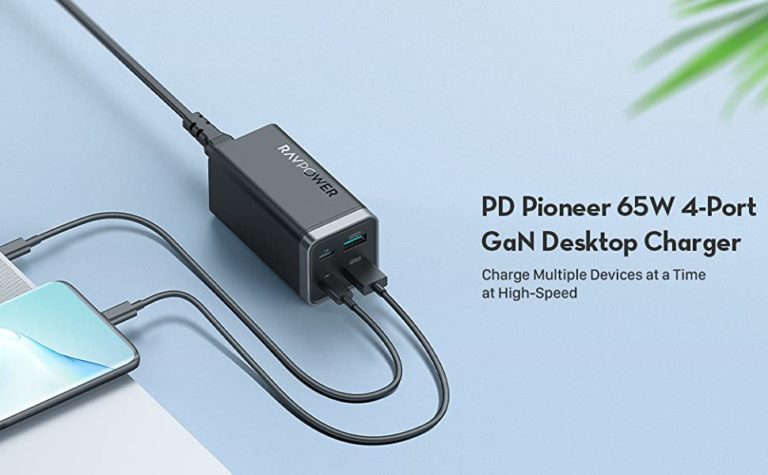
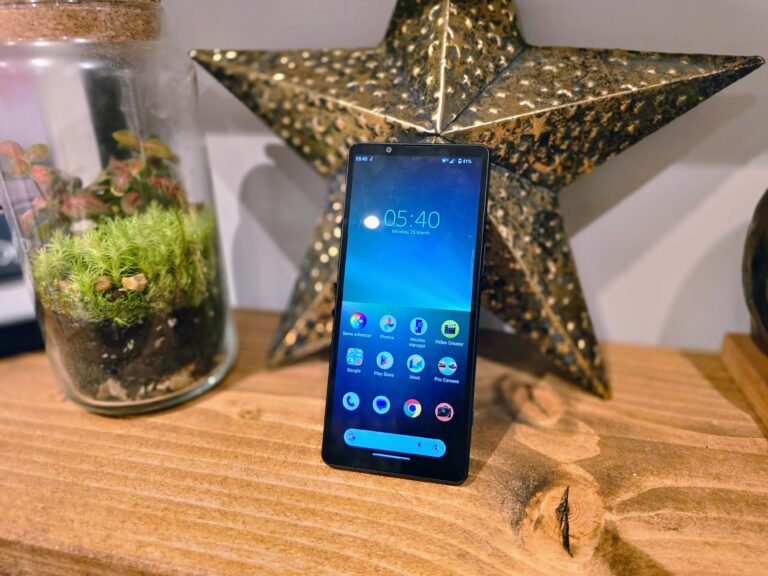
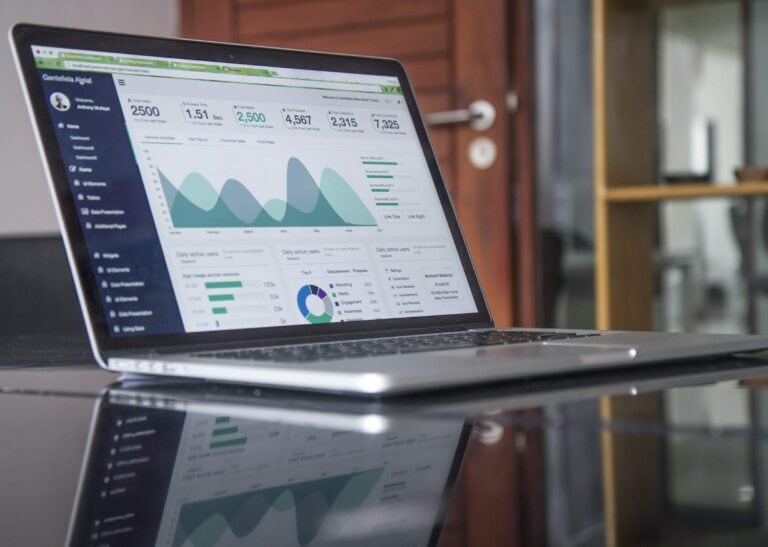

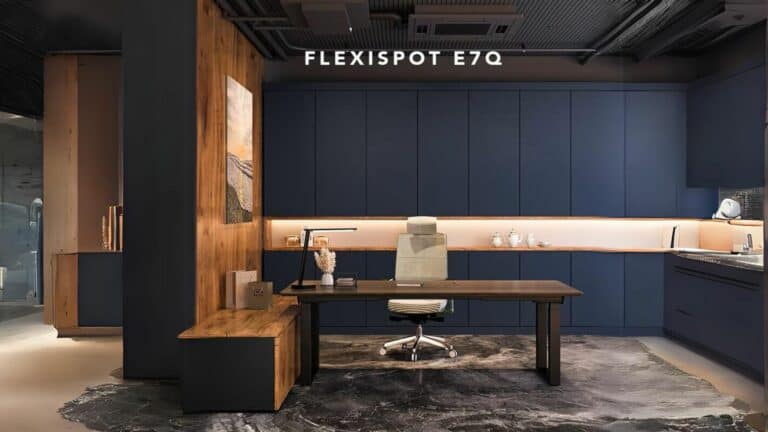
![Realme X50 Pro & Realme 6 Pro will be launched in the UK on 5th of May [Update: Launched with prices]](https://mightygadget.com/wp-content/uploads/2020/04/RealmeX50Pro-camera-768x359.jpg)